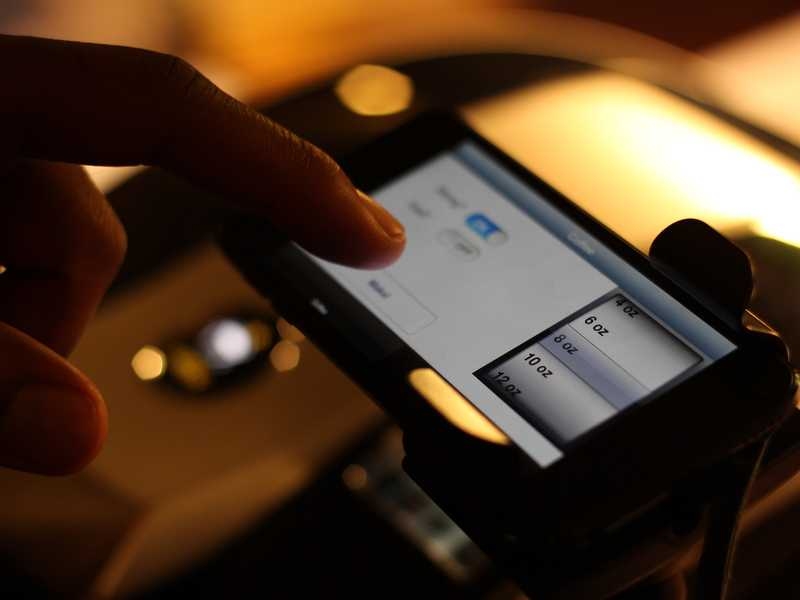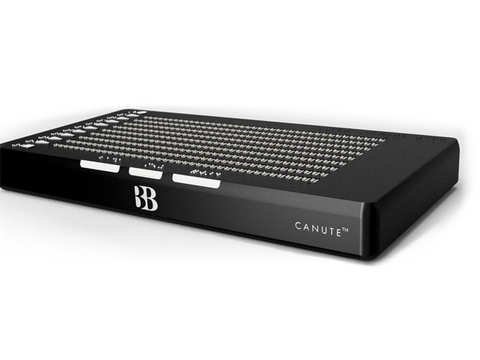Discover Ingenious Devices Developed for the Visually Damaged
The growth of cutting-edge devices for the aesthetically damaged stands for a substantial innovation in access and self-reliance. Technologies such as smart glasses with AI capabilities and mobile applications made to give acoustic descriptions are improving daily experiences for customers. Additionally, wearable gadgets that employ haptic comments improve ecological recognition, while contemporary Braille developments provide new ways to involve with text. As these devices remain to develop, their influence on the lives of those with aesthetic disabilities elevates vital inquiries regarding the future of inclusivity and freedom in various aspects of life. What exists in advance in this technological landscape?
Smart Glasses for Navigation

Smart glasses developed for navigation are revolutionizing the means aesthetically impaired people connect with their setting. These sophisticated devices make use of a mix of video camera modern technology, expert system, and auditory responses to supply real-time information regarding environments. By utilizing obstacle discovery systems, clever glasses can notify customers to possible hazards, allowing much safer flexibility in both strange and familiar settings.
The integration of GPS modern technology even more improves navigation capacities, permitting individuals to get acoustic instructions as they move. This hands-free method not just promotes freedom but likewise empowers aesthetically damaged individuals to browse urban landscapes with increased confidence. Additionally, lots of smart glasses are outfitted with attributes that determine sites and road signs, offering contextual info that improves the user experience.
Additionally, the development of these gadgets is consistently advancing, with business functioning to boost the accuracy of item recognition and broaden the variety of navigational features. As wise glasses become a lot more budget-friendly and obtainable, they hold the potential to significantly transform life for visually damaged users. Ultimately, these innovative devices represent an important step towards inclusivity, offering boosted movement and a higher feeling of autonomy for individuals browsing the globe around them.

Mobile Apps for Daily Living
How can mobile applications enhance the every day lives of aesthetically impaired individuals? Mobile applications are transforming the means visually damaged individuals browse their environments, manage everyday jobs, and gain access to details. These applications provide crucial assistance via various performances, promoting self-reliance and enhancing top quality of life.
Several cutting-edge mobile apps are made especially for daily living. Applications like Be My Eyes attach aesthetically impaired individuals with sighted volunteers via video phone calls, enabling them to receive real-time help with jobs such as reading tags or browsing unknown spaces. Similarly, Seeing AI, developed by Microsoft, makes use of artificial intelligence to describe surroundings, read text, and determine items, properly changing a smartphone into a powerful tool for day-to-day help.
Furthermore, navigation applications customized for the visually damaged, such as Aira and BlindSquare, provide audio-based directions and environmental information, making it possible for individuals to traverse their environments safely and with confidence. Past navigation and immediate assistance, mobile apps additionally support company and job management, with features that assist customers set suggestions, develop order of business, and track appointments. In recap, mobile applications function as indispensable sources, empowering aesthetically damaged individuals to lead even more independent and meeting lives.
Wearable Technologies for Assistance
Empowerment through modern technology is progressively apparent in the world of wearable gadgets made to assist visually impaired people. These cutting-edge tools incorporate perfectly into day-to-day life, improving navigating and offering essential comments to users. For example, clever glasses equipped with electronic cameras can review and identify faces text aloud, allowing customers to communicate even more with confidence in social and expert setups.
Another significant advancement is the use of haptic comments systems in wearable gadgets. These systems make use of resonances or other tactile signals to communicate info regarding the individual's atmosphere, such as challenges or modifications in surface, boosting mobility and safety. Wearable innovations also include wristbands that connect to mobile phones, informing customers to alerts via subtle vibrations, thus improving connectivity without reliance on visual cues.
As these technologies continue to develop, they are not only improving independence for visually impaired people yet likewise promoting a higher feeling of incorporation in society. By linking the gap in between obstacles dealt with in everyday living and the potential for autonomy, wearable innovations work as critical tools in the mission for equality and empowerment for those with aesthetic problems.
Sound Summary Devices
Audio description devices play a crucial duty in boosting accessibility for visually impaired people, offering them with the dig this ability to engage with aesthetic media. Voice-activated assistive devices. These devices provide narrated descriptions of vital aesthetic elements in films, television shows, and live efficiencies, making sure that individuals can totally understand the context and emotions conveyed through visuals
Sound summary can be integrated into various systems, consisting of streaming solutions, movie theater testings, and live movie theater. Numerous prominent streaming services currently include audio description as an ease of access function, allowing customers to select it quickly. Along with traditional media, specialized applications also exist, supplying audio descriptions for art exhibits, galleries, and other cultural occasions.
The performance of audio description rests on the ability of the narrators, who must communicate aesthetic information succinctly without interfering with the initial audio. Advancements in this field are additionally leading the way for more tailored experiences, where individuals can readjust the level of detail and pacing according to their preferences.
Braille Innovations and Gadgets
Braille innovations and devices have actually significantly transformed the method visually impaired individuals interact with text and info. Modern innovations have actually led to the development of functional devices that boost literacy and independence among individuals.
In addition, portable Braille notetakers incorporate standard Braille input with modern-day capabilities, promoting note-taking, scheduling, and document editing on the go. Speech-to-text devices for low vision. These compact devices frequently feature text-to-speech abilities, connecting the space between Braille and auditory information
Furthermore, cutting-edge Braille printers have actually emerged, allowing customers to create Braille tags, papers, and instructional materials efficiently. This availability fosters better polycarbonate glasses engagement in instructional and expert environments, inevitably promoting inclusivity.
Additionally, research right into clever Braille innovations remains to expand. Instruments that integrate fabricated intelligence are being checked out to give real-time navigating support and contextual information, improving the individual additional info experience in varied setups. In general, these innovations reflect a dedication to equipping visually damaged individuals via modern technology, ensuring they can conveniently gain access to and engage with the world around them.

Final Thought
The innovation of cutting-edge devices for the visually damaged substantially enhances independence and high quality of life. These technologies not only foster greater incorporation but additionally advertise freedom in daily tasks, inevitably adding to an extra fair and available culture for aesthetically damaged people.
As clever glasses end up being extra budget-friendly and accessible, they hold the possible to substantially transform daily life for visually impaired users. Mobile apps are changing the way aesthetically damaged customers navigate their atmospheres, manage day-to-day tasks, and access details. Apps like Be My Eyes attach visually impaired individuals with sighted volunteers via video telephone calls, allowing them to receive real-time help with tasks such as checking out tags or browsing strange spaces.Additionally, navigation apps tailored for the visually damaged, such as Aira and BlindSquare, provide audio-based instructions and ecological details, enabling users to traverse their environments safely and confidently.The development of ingenious tools for the aesthetically damaged dramatically boosts self-reliance and top quality of life.
Comments on “Smart Glasses for the Visually Impaired: Advances in Vision Support”